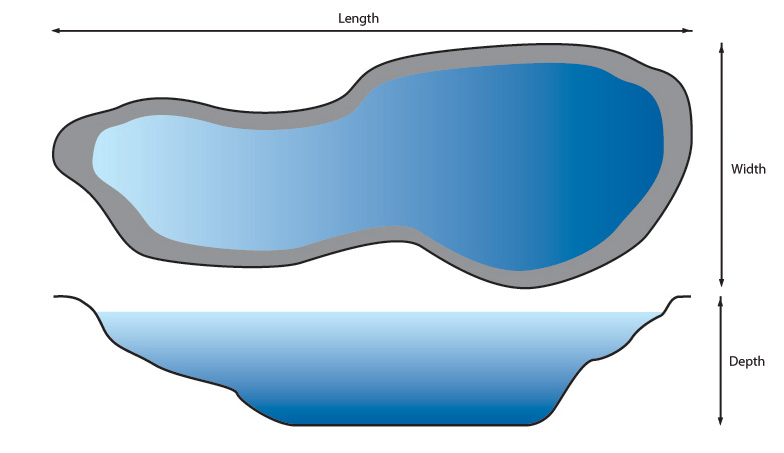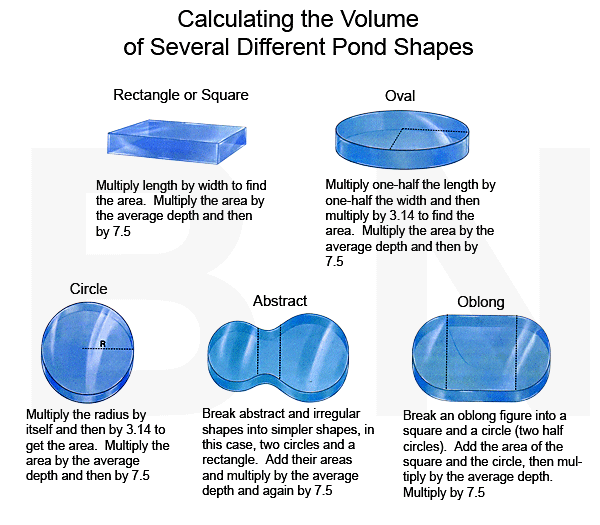When it comes to designing or maintaining a pond, one of the most crucial factors to consider is the pond volume. Calculating the volume of a pond is essential for various reasons, such as determining the amount of water it can hold, estimating the required pond treatments, and understanding the overall ecosystem of the pond. In this comprehensive guide, we will walk you through the steps to accurately calculate the volume of your pond.

Credit: m.youtube.com
Importance of Calculating Pond Volume
Understanding the volume of your pond is vital for multiple reasons. By knowing the exact volume of water in your pond, you can:
- Ensure proper aeration and filtration systems based on the pond size
- Calculate the amount of fish and aquatic plants your pond can sustain
- Determine the right dosage of pond treatments and chemicals
- Estimate water evaporation rates and refill requirements
Methods to Calculate Pond Volume
There are several methods to calculate the volume of a pond, depending on its shape and size. Here are some common techniques:
1. Measuring Dimensions
The most basic method to calculate pond volume is by measuring the length, width, and average depth of the pond. You can use the formula for calculating the volume of a rectangular or square pond:
2. Using The Trapezoidal Rule
If your pond has irregular shapes, such as a trapezoid, you can use the trapezoidal rule to calculate the volume. This method involves dividing the pond into sections and calculating the volume of each section separately.
3. Using A Water Level Marker
Another simple method is to use a water level marker to measure the change in water level after adding a specific amount of water. By recording the change in water level, you can calculate the volume of water added and, consequently, the total volume of the pond.

Credit: www.aqualinersdirect.co.uk
Step-by-Step Guide to Calculating Pond Volume
Now let’s dive into the step-by-step process of calculating the volume of your pond:
Step 1: Determine The Shape Of Your Pond
Identify the shape of your pond, whether it is rectangular, circular, irregular, or any other shape. The shape will determine the method you use to calculate the volume.
Step 2: Measure The Dimensions
Measure the length, width, and depth of your pond using a measuring tape or ruler. For irregularly shaped ponds, divide the pond into sections and measure each section separately.
Step 3: Calculate The Volume
Once you have the measurements, use the appropriate formula to calculate the volume of your pond. For example, for a rectangular pond, use the formula Volume = Length x Width x Depth.
Step 4: Convert Units
Ensure that all measurements are in the same units (e.g., feet or meters) before calculating the volume. If needed, convert the units to maintain consistency in your calculations.
Step 5: Check Your Calculation
Double-check your calculations to ensure accuracy. Any errors in measurement or calculation can lead to inaccurate results, which may impact the management of your pond.
Tips for Maintaining a Healthy Pond
Once you have calculated the volume of your pond, it’s essential to maintain a healthy ecosystem to ensure the well-being of aquatic life and the overall aesthetics of the pond. Here are some tips for pond maintenance:
- Regularly monitor water quality parameters such as pH, ammonia, and oxygen levels
- Control algae growth by using natural remedies or algaecides
- Remove debris and dead vegetation to prevent water contamination
- Introduce beneficial bacteria to promote a balanced ecosystem
- Ensure proper aeration and filtration systems to maintain water clarity
Conclusion
Calculating the volume of your pond is a fundamental step in pond management and maintenance. By accurately determining the volume, you can make informed decisions regarding the care and treatment of your pond. Whether you have a small backyard pond or a large water feature, understanding the volume is key to creating a healthy and thriving aquatic environment.
Follow the steps outlined in this guide to calculate the volume of your pond accurately and enjoy a beautiful and sustainable aquatic ecosystem for years to come.





